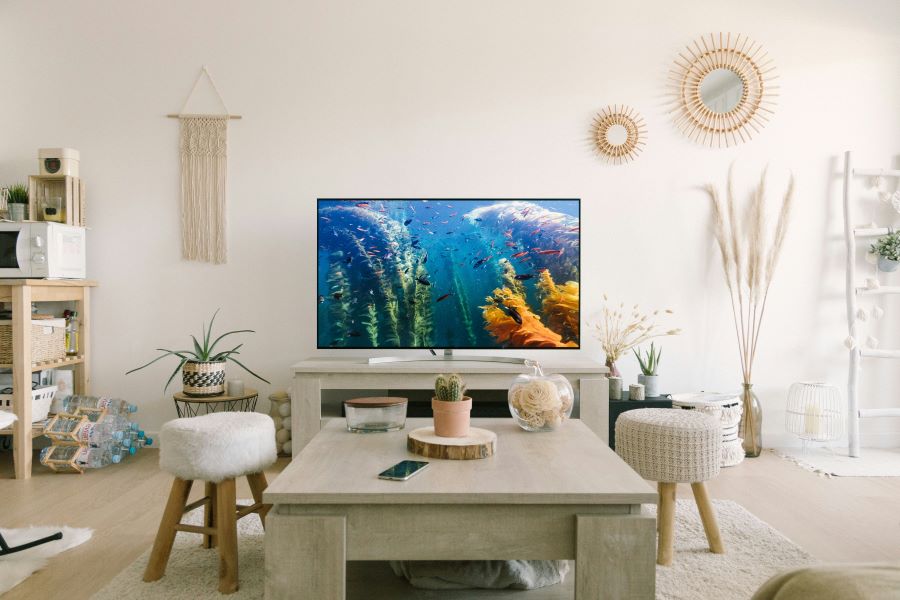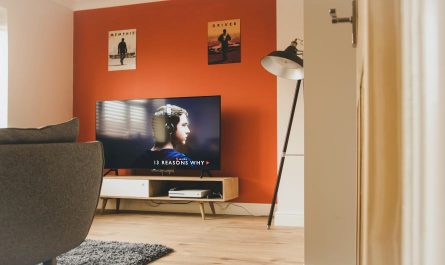With advancements in technology, the evolution of TV screens has also taken over the tech industry. Larger screens are preferred by users for improved picture quality, energy efficiency, and sleeker designs. Providing a convenient watching experience for users.
Buy Airtel DTH with exciting benefits
However, understanding the differences between the various types of TV screens is crucial for selecting the right one for your home entertainment setup. If you are looking for ways to understand more about TV screens or find an ideal option for your home or commercial places, continue reading till the end.
I. CRT (Cathode Ray Tube) TV Screens: A Look Back
Just not a long time ago, CRT screens were once the standard in television technology. Consisting of a cathode ray tube to display images on a screen, CRT TV screens surely stood out from the rest.
While CRT TVs have largely been phased out in favour of newer technologies, they still offer some advantages.
– Advantages: CRT screens are known for their deep blacks, wide viewing angles, and lack of motion blur.
– Disadvantages: However, CRT TVs are bulky, heavy, and consume more power compared to modern flat-screen TVs. Hence, users prefer other options than CRT TV screens.
– Market Relevance: Fortunately or unfortunately, with the emergence of newer technologies, CRT TVs are no longer commonly found in the market and most consumers opt for newer screen types.
Read more: How to connect an Android TV box to a Wi-Fi network
II. Plasma TV Screens: The Pioneer of Flat Screens
One of the most popular screen types, plasma screens were once considered the pinnacle of flat-screen technology. They were popular for offering excellent picture quality and colour accuracy.
– Advantages: Plasma screens are known for their deep blacks, vibrant colours, and fast response times. They are ideal TV screens for watching movies and sports.
– Disadvantages: However, one of the drawbacks of Plasma TV screens is that they are susceptible to image retention and burn-in. Hence, consuming more power compared to LCD and LED TVs.
– Market Relevance: While plasma TVs were popular in the past, they have been largely replaced by newer technologies such as LCD and OLED.
III. LCD (Liquid Crystal Display) TV Screens: A Popular Choice
LCD screens revolutionized the television industry with their slim profiles, energy efficiency, and bright displays. Enhancing the overall experience of the user.
– Advantages: One of the greatest advantages of LCD offers excellent brightness and colour production. They are more suitable for well-lit rooms. LCD screens are also available in a wide range of screen sizes and resolutions.
– Disadvantages: The drawback of using LCD screens is that they may offer limited viewing angles and motion blur. However, this situation is more common in lower-quality LCD models.
– Factors to Consider: When choosing an LCD TV screen, consider factors such as screen size, resolution, and refresh rate to experience the best viewing experience of all time!
Read more: What is an Android TV box and how does it work?
IV. LED (Light Emitting Diodes) TV Screens: The Evolution of LCD
LED screens build upon the LCD technology by using LED backlighting to illuminate the display.
– Advantages: LED screens offer improved energy efficiency, better contrast ratios, and thinner profiles compared to traditional LCD TVs.
– Disadvantages: However, LED screens may still suffer from limited viewing angles and motion blur, similar to LCD screens.
– Factors to Consider: Look for features such as local dimming and high refresh rates when choosing an LED TV screen for enhanced picture quality.

V. OLED (Organic Light Emitting Diodes) TV Screens: The Future of TV Displays
OLED screens represent the cutting edge of television technology, offering unparalleled picture quality and design flexibility.
– Advantages: OLED screens deliver perfect blacks, infinite contrast ratios, and wide viewing angles, resulting in stunning picture quality.
– Disadvantages: However, OLED TVs tend to be more expensive compared to LED and LCD TVs, and they may be susceptible to burn-in with prolonged use.
– Factors to Consider: Consider factors such as budget, usage habits, and room lighting when choosing an OLED TV screen for your home.
VI. QLED (Quantum Light Emitting Diodes) TV Screens: A New Contender
QLED screens combine LED backlighting with quantum dot technology to deliver vibrant colours and improved brightness levels.
– Advantages: QLED screens offer excellent colour accuracy, high brightness levels, and improved energy efficiency compared to traditional LED TVs.
– Disadvantages: Considering the drawbacks, QLED TVs suffer from limited viewing angles and motion blur, similar to LED and LCD screens.
– Factors to Consider: You can consider factors such as Quantum HDR and Direct Full Array backlighting to ensure you choose the best QLED TV screen for enhanced picture quality and viewing experience.
Read more: 20 Android TV apps that you should install!
VII. Choosing the Best TV Screen Type for Your Needs
When selecting a TV screen type, consider the following factors:
– Budget and Cost-Effectiveness: It is always a good practice to determine your budget and prioritize features based on your spending limit before choosing the TV screen for your home or personal purposes.
– Screen Size and Viewing Distance: To enhance the overall viewing experience and aesthetic touch of your home, look for screens that complement your room size. Avoid investing in too big or too small screens that don’t fit well your room size.
– Picture Quality and Colour Accuracy: Consider factors such as contrast ratio, colour reproduction, and viewing angles for the best picture quality.
– Refresh Rate and Response Time: Lastly, one should always invest in TV screens with high refresh rates and fast response times for smooth motion and reduced motion blur.
Conclusion
In conclusion, the best TV screen type for you depends on your individual preferences, budget, and usage habits. Hence, it is advised not to be influenced by the overall appearance or reviews of others.
Hence, understanding the differences between CRT, plasma, LCD LED, OLED, and QLED screens is important before choosing the right screen for you. Make informed decisions by following the above-mentioned steps.
If you are buying a new TV, then why not get a good DTH connection along with it? Explore the different set top boxes from Airtel and get the one that suits you best!


 Get App
Get App  Airtel Store
Airtel Store  Login
Login 


